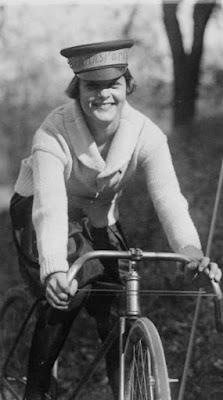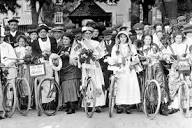One reason why so many bike infrastructure projects are ill-conceived, -planned or -executed is that, too often, planners have an inaccurate idea--or no idea at all--of how many cyclists are riding along a particular route or at a given time. As often as not, planners have only a rough guesstimate of how many people ride per day, month or year.
One reason for that is the planners' methods and equipment for gathering data are designed to give accurate counts of motorized, but not cycling or pedestrian, traffic. That is at least somewhat understandable: After all, cars, trucks and buses are easier to detect, whether by humans or devices, than cyclists or pedestrians. Also, most planners are educated and trained to collect, and pay attention to, "big data"--and their experience reinforces that bias.
"Little data", if you will, is especially relevant in regards to cycling because cyclists--whether they're riding to work, or for fitness or pleasure--take a greater variety of routes and have a wider range of destinations than most drivers. While one can find clusters of cyclists in certain parts of a city, and along certain routes and certain times, those of us who pedal aren't clustered to the same degree as those who go where they want or must by putting a foot on the gas pedal.
Some researchers in Texas are aware of what I am describing. They are working on a pilot program, backed by the Texas Department of Transportation, to find more "nuanced data", in the words of Greg Griffin, about cycling and walking in Austin and Houston.
The goal, says Griffin, is to better inform, among other things, Austin's corridor project, which will build lanes along nine roads. That project received funding from the mobility bond Texas voters chose last year, but the City Council hasn't approved construction plans. A draft of those plans is expected to go before the City Council next year and Griffin, a Texas A&M researcher, hopes to better inform the project and others like it.
He and other researchers are trying a number of methods to count cyclists, such as gathering data from Strava and other apps. Of course, not all cyclists use them, so Griffin and his team are also installing pneumatic tubes similar to the ones used to count cars along roads frequently used by cyclists. Those tubes, however, last only a few weeks, so he is trying to have permanent counters installed and recruiting cyclists and others to interview cyclists about their riding habits.
A variety of methods must be used, he says, because using only one would skew the results toward one type of cyclist over another. For example, merely taking data from apps, he says, would result in "planning for people that are buying apps--instead of your community."
He and others hope that better methods of taking a cycling census, if you will, will help to lay a "foundation for being able to save lives through infrastructure changes."





















